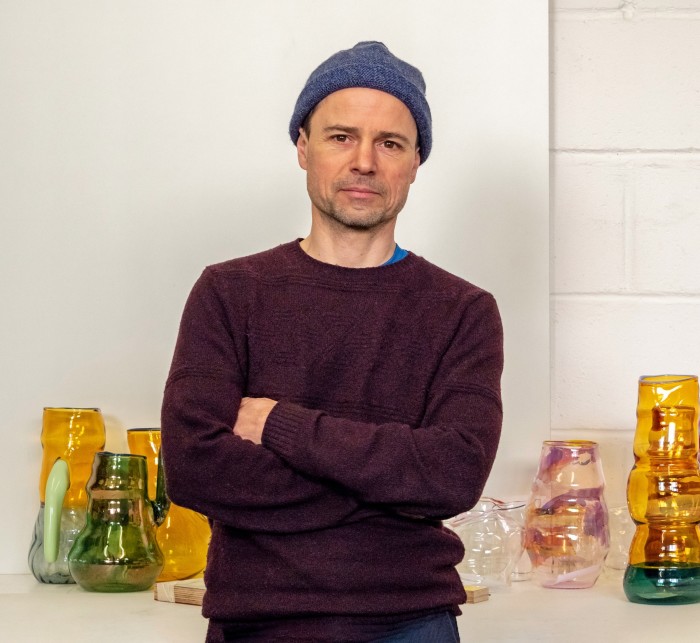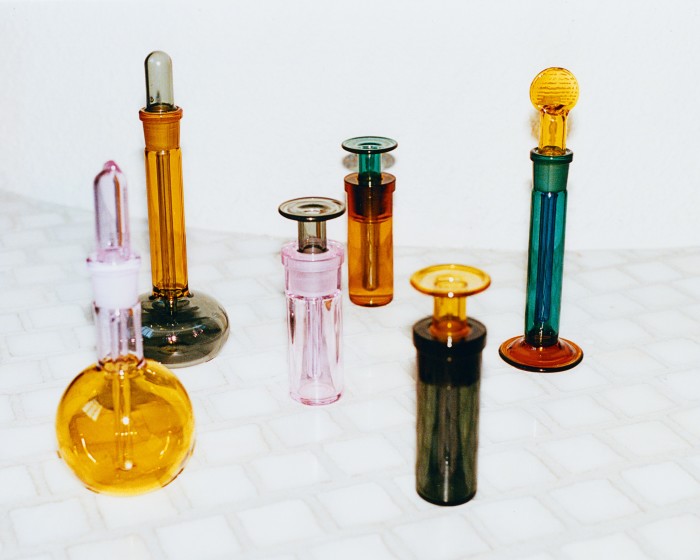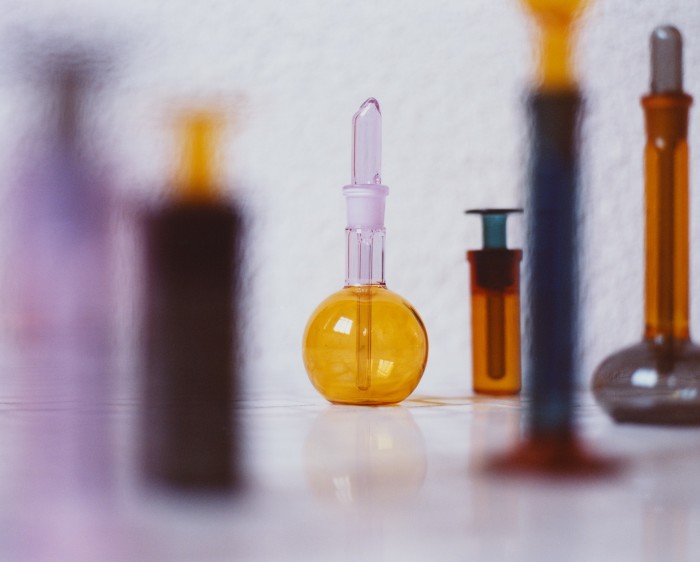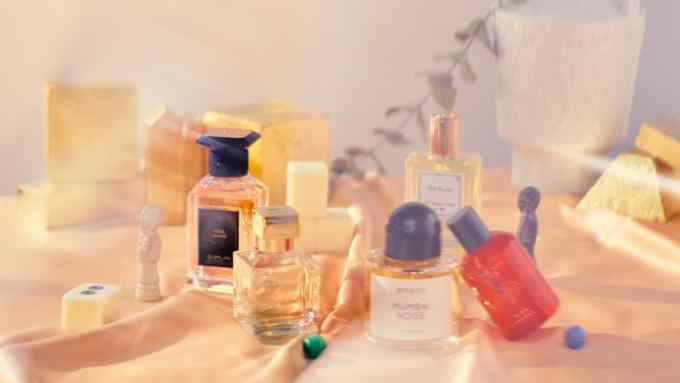Meet the fragrance duo blazing a multisensory trail

Roula Khalaf, Editor of the FT, selects her favourite stories in this weekly newsletter.
When Barnabé Fillion and Jochen Holz talk of their collaboration – a series of striking glass bottles encasing a new line of perfumes – it isn’t scent or even aesthetics that first spring to mind. It is sound: “I remember being in Jochen’s studio and being so inspired by the music,” says French perfumer Fillion. “We were listening to Eliane Radigue and Pauline Oliveros – both female pioneers of electronic music, who actually became the inspiration for this first sequence of seven perfumes.”
These fragrances are part of Arpa – what Fillion calls “a research project” with artists exploring the “synaesthesia phenomenon through perfume development, music production and an art residency”. Across spaces in Paris, Kyoto and Mexico (where Arpa has taken over Casa Möbius, the modernist home and studio of the late architect Ernesto Gómez Gallardo), Fillion will direct creative explorations into synaesthesia, which causes a blending of the senses. Some synaesthetes can, for instance, taste sounds. Fillion, who worked as photographer and a model before retraining as a nose, experiences images and sounds as “textures”. Over the past decade he has used his sense-blending skills to create perfumes for Paul Smith, Le Labo and Aesop, as well as collaborating with Scottish whisky brand Royal Salute and conceptual artist Anicka Yi, who often utilises scent in her work and has created two sculptural pieces for Arpa, including a diffuser sculpture inspired by “fantastical fungi”.

But it was Holz, the east London-based glass artist, who was one of the first Fillion contacted about his Arpa project. “Jochen’s work is extremely free and playful, yet at the same time so subtle in its use of colour,” says Fillion. “I was interested in how we could change the synaesthesia of the perfume with the colour of the bottles,” says Fillion.
Fillion’s pitch intrigued Holz. “He had this elaborate presentation, which was very deep in the sense that it would take in big ideas – planetary constellations and elemental forces. I was attracted by that,” he recalls. “I’m always a bit too busy, so I have to be persuaded, and Barnabé did that very well, without bullshitting.”

Fillion’s visual prompts, referencing Italian futurism and the Memphis Group, went into the melting pot alongside Holz’s more practical considerations about materiality – with the need for a secure closure adding a new level of precision to his glass-sculpting process. “We created the form and the palette around existing stoppers,” says Holz, “which involved a lot of refining and fiddling with the proportions.” The result, however, is an elegantly simple, cylindrical bottle that layers three glass colours, reflecting the base, heart and top notes of each scent. The first three fragrances – Arco Spettro, Fosforo and Recedere (all €266 for 50ml) – will be released at the end of the month.
“Arco Spettro is inspired by Dallol in Ethiopia, which is the warmest place on Earth,” says Fillion of the musky blend of guaiacwood and vetiver with juniper and frankincense. “Dallol’s salt desert lies on top of a volcano, creating a multicoloured mirage that is expressed in extreme colours: pink, yellow and the same teal green that Jochen uses a lot in his work.” Recedere combines liquorice and neroli with cedar and moss. Heady and hazy, it is an olfactory translation of the Hallerbos, a Belgian forest famous for its springtime carpet of bluebells. “At that time, the light through the forest becomes absolutely blue,” says Fillion. “So the bottle is dark green, the pipette inside is blue, and the yellow at the top is like the sunlight between the tree trunks. I would say that all the colours we’ve used are retro-futuristic, reflecting the utopia of cosmic travel.”

Even the unwrapping of an Arpa perfume is designed as a multisensory experience: the bottle is encased in a glycerine-soap shell, which can later be used for washing; there’s imagery by founding Memphis member Nathalie du Pasquier; and each scent has its own soundtrack, created by composers such as Cyrus Bayandor and Joseph Schiano di Lombo, supplied on vinyl. The accompanying magazine declares: “At Arpa, you will listen to the scent.”
Each perfume is also available as an artist edition (€388), where the design details are more experimental. “We tried very distinct things, such as pressing the glass on wood or cutting it with scissors, and created decisive textures rather than purely decorative elements,” says Holz.

Their shared passion for electronic music – and specifically modular synthesisers – inspired Fillion to make the fragrances modular, too; so the seventh in the series (which will be released with the three remaining scents at the end of this month) is designed to be layered with all the others in the collection, “as a sort of oscillator or amplifier”, says Fillion, adding that the name Arpa is a nod to the ARP synthesiser as well as the artist Jean Arp.
But how would the two creatives define each other through their work? “I would create a sundial,” says Holz, as to how he would capture Fillion’s characteristics in a design object. “It’s quite elemental,” he adds. And if Fillion were to imagine Holz as a scent? “It would be very free, generous and kind, with elements of transparency – referencing his glasswork, but also his personality. And then there is the element of fire involved in his work… It would be a very interesting project.”

Comments